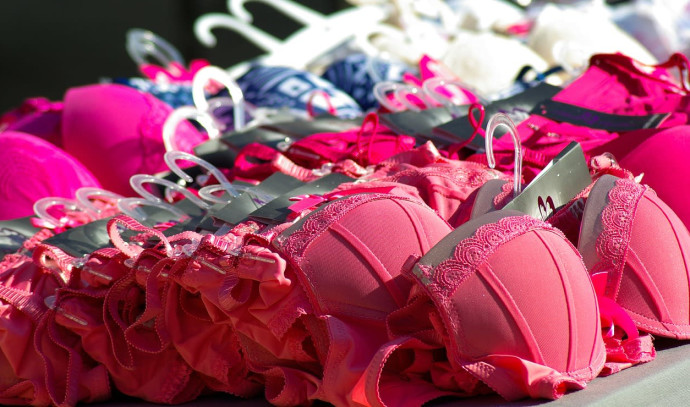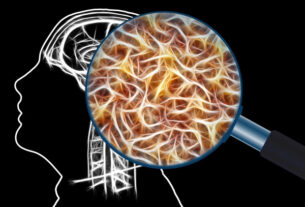Let’s be honest: How sure are you that the bra you’re wearing right now is really your size?
If you barely feel its presence or vice versa, you feel that your chest is spilling to your sides, your bra size doesn’t match your measurements. Nutrition coach and LDN Mums Fitness founder Sara Campus says the fit of the bra is important in supporting your posture and stability, your back and your overall health.
The number of times she meets women who don’t wear the right bra for them or don’t wear one at all, is excessive. It’s also not right for women with small breasts to wear a crop top that doesn’t provide support. What you choose to wear there affects your whole body. Breasts of any size need support.
A British study found that 81% of women wear bras that aren’t their size and this may have significant consequences, much more than clothes that just don’t look good on you. Here’s the list of health effects of wearing a bra that’s the wrong size.
How to know which bra size is right for you
Pain
Samantha Ryder, founder and CEO of Perky Pear, says that wearing a bra that is too tight can compress the chest and lead to pain and discomfort that can spread to the ribs, shoulders and back. Similarly, a bra that’s too loose may not provide enough support, which will lead to back and chest pain.
Campus says that the muscles will be the ones trying to provide the missing support. Wearing a bra that doesn’t fit can damage your lower back and buttocks. Also, it can affect the way you walk.
Early drooping
If you release them, they may fall. You should know this, especially if you exercise regularly, because all that running and jumping up and down can take a toll over time. Campus warns that one must support her breasts, otherwise, they might be a bit like loose bags.
In rare cases, some women have axillary pectoris, a congenital condition in which pockets of breast tissue grow outside the breast area, usually under the armpit. It’s usually harmless and the problem is usually treated with liposuction but wearing a well-fitting, comfortable bra may help hold in the tissue so it won’t sag.
Breathing problems
If your bra is too tight, it can put pressure on your upper torso and affect your lungs and chest. A tight bra also affects circulation and milk production if you’re breastfeeding.
Tissue damage
The pressure of the chest can cause pain in the skin of the breast and nipples. The tissues in our breasts and nipples are very sensitive, meaning they don’t take kindly to pressure created by cups or straps that are too short. Wires that poke out through the fabric are also not good for breasts, so throw away old bras with improper wiring.
Nerve damage
Thoracic outlet syndrome is a collection of pain symptoms and neurological deficits caused by pressure on the nerves and blood vessels that pass through the chest cavity. Compressed nerves and blood vessels lead to neck pain, numbness and tingling sensations in the arms and even the palms.
This problem is usually treated with muscle relaxants and anti-inflammatory drugs which must be obtained from your family doctor yet it’s recommended to avoid a situation where your bra is the catalyst for this.
What can you do to avoid these problems?
Measure specifically
Wear a bra that fits your measurements. It’s important to be measured every 6 to 12 months, not just every five years as most women do.
What if you’re currently pregnant or postpartum? Nursing bras are designed to expand as your chest grows. The right fit is really important, and you can even be properly measured for a sports bra and not just large, medium or small.
Release
Feeling the pressure from a bra that doesn’t match your measurements? Take a break and remove your bra as soon as you get home and let loose. As you do this, take time to gently massage your chest and shoulders and try to relax tense or tender muscles.
Using heat
Place anything warm on your back, shoulders, sternum or neck if you feel these areas are stiff and painful. Anything hot can help ease the discomfort so take a hot bath or put a hot water bottle on the painful area.
Stretch
Open your back and chest with simple stretches. Women should put their hands behind their bodies and roll their shoulders forward and then back. Then, put both hands on a chair or table and let your head hang in the air for a few seconds to stretch your back.
Also, maintain good posture. When sitting, make sure that your legs aren’t crossed and that both of your feet are planted on the floor. When you stand, stand evenly on your feet: don’t stand on one side and put all your weight on it.
Move
To combat back and shoulder pain, lying down can do more harm than good. Strengthening the abdominal muscles is great, since core strength is very important because it’s connected to the back muscles which activate the glutes. Lifting light weights, too, can help strengthen those muscles. Use rice bags or water bottles if you don’t have weights at home.
Speak with your family doctor
Have you tried heat and strengthening exercises but the area still hurts? Speak to your doctor.




